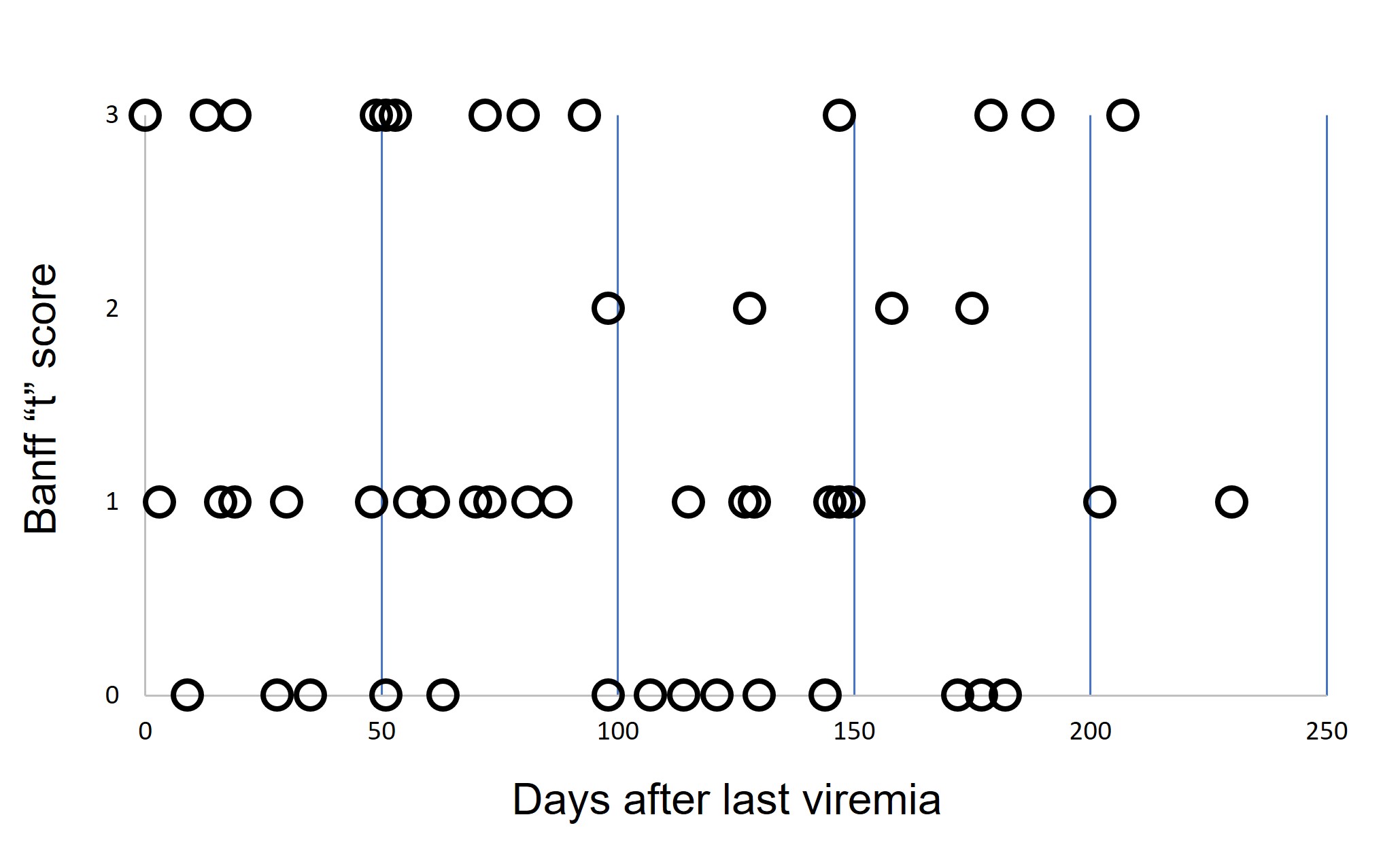Kinetic Analysis of Post-Clearance Phase Inflammation in Kidney Biopsies After BK Viremia
1University of Michigan, Ann Arbor, MI, 2Dept. of Pathology, University of Michigan, Ann Arbor, MI
Meeting: 2022 American Transplant Congress
Abstract number: 257
Keywords: Graft survival, Inflammation, Kidney transplantation, Polyma virus
Topic: Clinical Science » Infection Disease » 26 - Kidney: Polyoma
Session Information
Session Name: Kidney: Polyoma Infections
Session Type: Rapid Fire Oral Abstract
Date: Monday, June 6, 2022
Session Time: 3:30pm-5:00pm
 Presentation Time: 4:20pm-4:30pm
Presentation Time: 4:20pm-4:30pm
Location: Hynes Room 309
*Purpose: During the post-clearance phase of BK polyomavirus nephropathy, tubulointerstitial inflammation can persist despite resolution of BK viremia. This inflammation is indistinguishable from low grade cellular rejection. We sought to determine how long inflammation persists after infection, and whether it or any other histologic feature can inform medium term graft prognosis.
*Methods: 47 surveillance and indication allograft biopsies from 45 patients taken up to 200 days after the last positive BK PCR from kidney transplant recipients with BK viremia between 2010 and 2017. All biopsies were scored according to the Banff 2017 classification. Time after last positive BK PCR was compared to both acute (i, ti, t, g, ptc) and chronic (ci, ct) Banff subscale scores. In addition, the relationship between 3- and 5-year death-censored graft survival and the histologic features were assessed. Active lesions were binned into absent (0) vs present (1-3), while chronic features were binned into none/low (0-1) vs extensive (2-3). For biopsies with extensive inflammation (i or ti>2), the relationship between length of time post clearance and extent of plasma cell inflammation was also examined.
*Results: Both tubulitis and interstitial inflammation are common for up to 200 days after BK infection (53% with i>0, 59% with ti>0, and 68% with t>0). However, there was no correlation between the severity of inflammation and death-censored graft survival. In contrast, both ci and ct scores of 2 or 3 correlated with graft failure at both 3- and 5-year time points (p=0.05). Severity of chronic lesions remained constant from 0-3 and 3-6 months. 50% (6/12) of biopsies with extensive inflammation exhibited plasma cell-rich inflammation at 0-100 post-viremia, and 16.67% (2/12) exhibited plasma cell-rich inflammation at 100-200 days post-viremia.
*Conclusions: Inflammation after BK clearance confirms the findings of Menter et. al. (2013). However, the prolonged persistence of inflammation at 3-6 months after resolution of viremia is surprising. The inflammation is less likely to be plasmacytic in later biopsies, raising the possibility of subclinical rejection in biopsies with inflammation persisting more than 3 months after viremia. However, only scarring and not inflammation was predictive of subsequent graft loss.
To cite this abstract in AMA style:
Vincent M, Rajagopal JT, Farkash E. Kinetic Analysis of Post-Clearance Phase Inflammation in Kidney Biopsies After BK Viremia [abstract]. Am J Transplant. 2022; 22 (suppl 3). https://atcmeetingabstracts.com/abstract/kinetic-analysis-of-post-clearance-phase-inflammation-in-kidney-biopsies-after-bk-viremia/. Accessed December 16, 2025.« Back to 2022 American Transplant Congress

